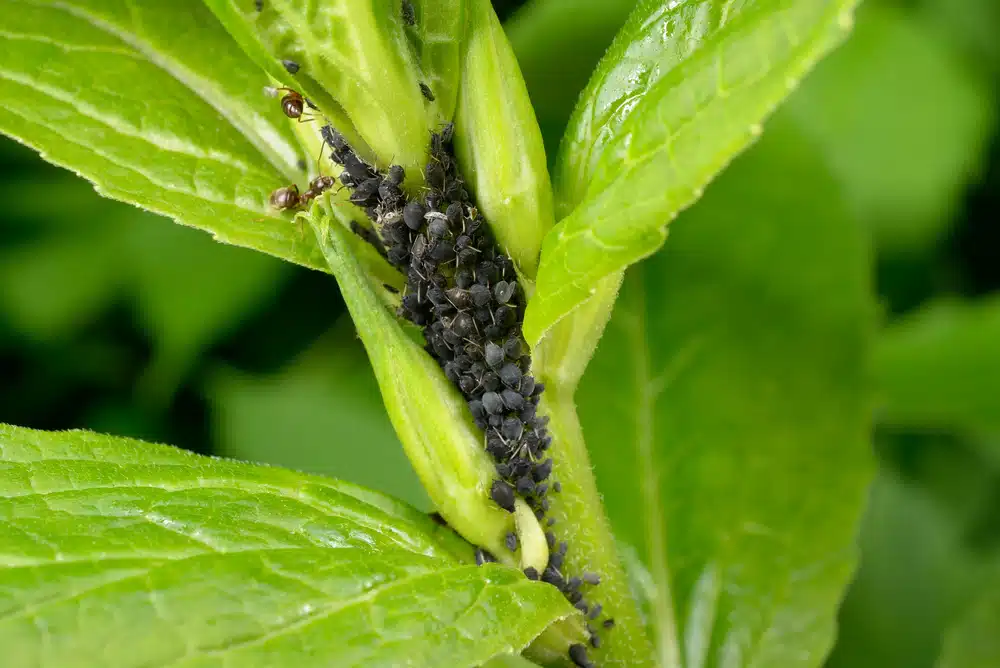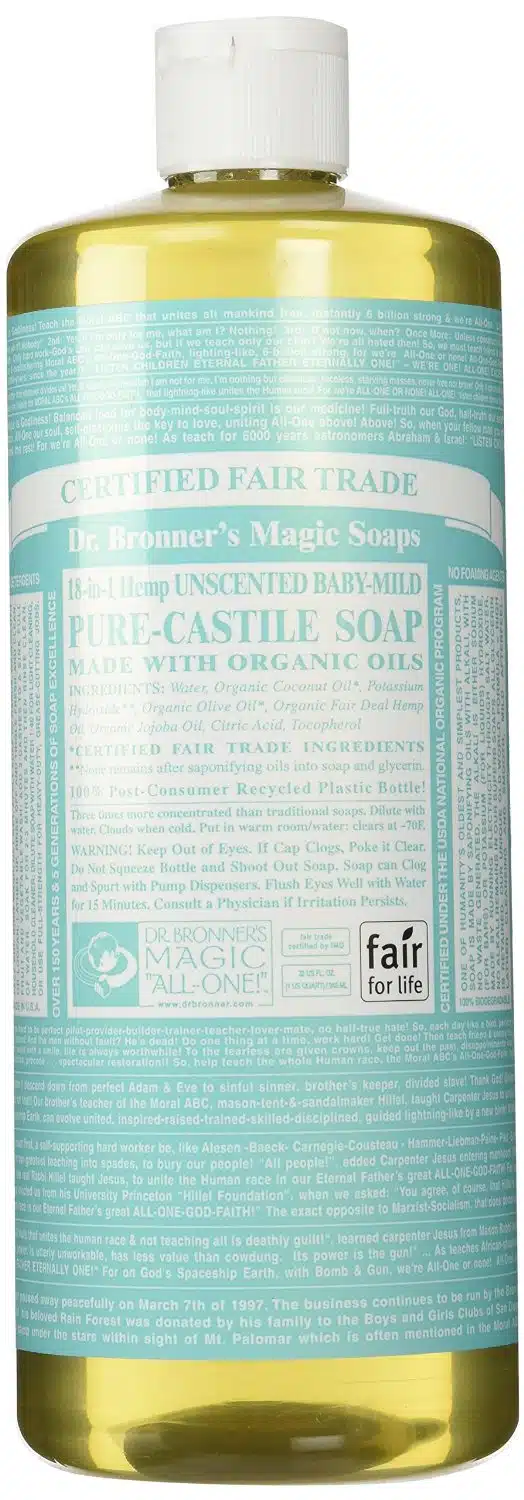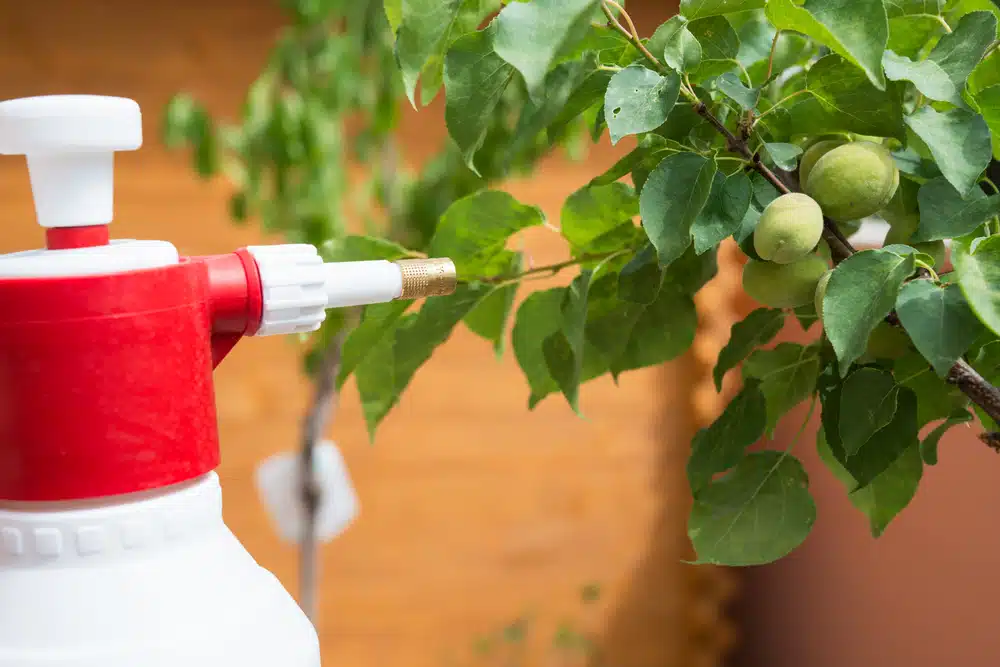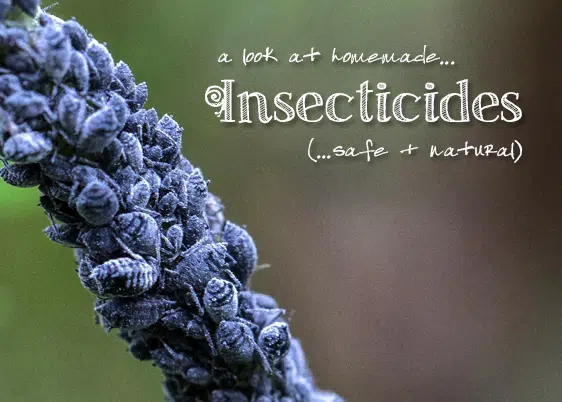My struggles with pests this year have prompted me to investigate some of the more commonly suggested home-made insecticides.
Just to give you an idea, my beetroot has been beset by leaf-miners and aphids, I’ve just noticed a little family of what I think are thrips on my peppers, and, though I know they’re not a huge source of concern, a colony of ants has decided to set up in my raised bed. My main concern is that they’ll protect any potential aphids on my nearby raspberry plant.

So, this post has really arisen out of my need to get to grips with my own issues. Hopefully, you’ll find my it aids your own fight against those garden blighters!
The Quick Solution: Mild Soap and Water
 If you’re just looking for a quick solution to implement immediately, a teaspoon of mild soap and a spray bottle full of water forms a basic insecticide. Mild is the key word here, so don’t use dish-washing soap, which is actually a detergent. A few shavings of dissolved hand soap would be better than bottled. Try it on a few leaves first, leave it for a few days, and if there’s no burning or necrosis, you should be good to go.
If you’re just looking for a quick solution to implement immediately, a teaspoon of mild soap and a spray bottle full of water forms a basic insecticide. Mild is the key word here, so don’t use dish-washing soap, which is actually a detergent. A few shavings of dissolved hand soap would be better than bottled. Try it on a few leaves first, leave it for a few days, and if there’s no burning or necrosis, you should be good to go.
Dr. Bronner’s is a good soap that contains what is called potassium salt of fatty acids (all soaps are salts of fatty acids), which is also a very common and safe pesticide. It’s what I use (without, touch wood, any trouble so far) on most of my plants if they need it.
A Closer Look at Homemade Insecticide Ingredients
Soap: Most gardeners will be familiar with the soap-water mix: add a few drops of liquid soap to a spray bottle of water and mist the affected area, usually at an interval of five days or so, until the pests have gone. Though the exact mechanism by which soap kills insects isn’t fully understood, it is thought that the fatty acids in soap damage the insect’s outer membrane, causing leakage of cell contents.
Many find this method alone to be effective in combating insects. My own experience, as I mentioned above, is that strong soap can burn the leaves, so mild is the main watchword here. Also make sure that only a few drops (teaspoon to a pint) are used (a 2% mixture is recommended). “Potassium salt of fatty acids” (a combination of potassium hydroxide and vegetable oils) is the main ingredient in most commercial insecticidal soaps and is considered relatively non-toxic. Mild soaps like Dr. Bronners contain this as the main ingredient.

If you are intent on using a harsher product like dish soap, then make sure you try it on one or two leaves first then leave them for a few days to check for any damage. Remember that many so-called soaps are actually detergents, which have a different, and much more plant-destructive, chemical profile.
Oil: The main mechanism by which oil works is to block the holes through which insects breathe. It is usually recommended as an accompaniment to soap (most recommend a teaspoon of oil and a teaspoon of soap). The soap acts as an emulsifier, better mixing the oil for the purposes of spraying, alongside having its own insecticide properties.
I see no reason why oil can’t be used on it’s own, or at least experimented as such, as long as the bottle is well-shaken. The term “horticultural oil” refers to any oil made specifically for the purposes of controlling plant pests, and is usually a purified mineral oil. Vegetable oils, such as cottonseed and soybean, are the best options for home use, although it may be worth experimentting with whatever’s in your cupboard.
Neem oil: Because of its popularity, neem oil, pressed from the seeds of the neem tree, deserves its own mention. Neem oil has a hormonal effect on the insects, making them forget, for instance, to eat. It works over a relatively longer period than soap sprays (weeks as opposed to days). Neem oil and soap is a popular home-made remedy.
Garlic: Another commonly-cited organic insecticide ingredient. The garlic supposedly deters insects because of its foul smell – they dislike it and it also hides the scent of the potential host plant. The cloves, which contain various compounds such as sulphides which may be harmful to insects, also has antibacterial properties, which may protect against bacteria and fungus. You can either add a few crushed bulbs to a pint or so of water (let it steep for two days) or as an addition to the soap and oil mix.
Chilli Powder: Finally, we have chilli powder. The theory behind this is that the capsaicin in chillies is distasteful to insects. Add a teaspoon of powder, or a ground chili, to a pint of water. It can also be added to any mix constituted of the ingredients above. Spray gently.
A quick note for when homemade remedies won’t do: Sometimes a home-made solution simply won’t get rid of certain insects (or even bigger pests). In this case, it’s always best to find an ethical company from a site like Pest Control Reviews.
Further Resources
http://www.ladybug.uconn.edu/factsheets/tp_05_insecticidalsoap.html
http://www.ext.colostate.edu/pubs/insect/05547.html

Thank you for this information. You explained very clearly and ‘organically’!
Thanks Sue, appreciate it! Here’s to successful growing in 2016!
Pingback: 10 Vegetables to Sow in February - Urban Turnip
Pingback: How to Grow Kale in Containers - Urban Turnip